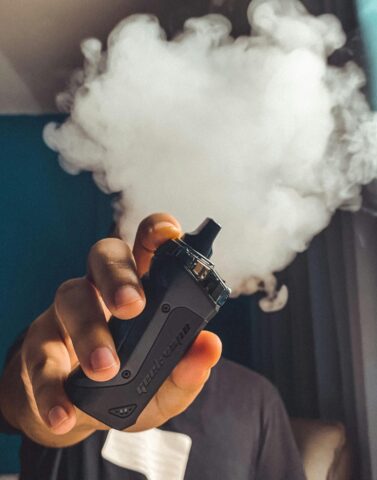E-cigarette liquids, at the bare minimum, have three main components: flavors, sweeteners and solvents. Solvents are substances used to dissolve either nicotine or marijuana-derived compounds including THC or CBD so those ingredients can be inhaled.
Sweeteners include sucralose and ethyl maltol. E-liquid flavors are wide-ranging, and can read like a wine tasting: “notes of vanilla” or “berries and herbal notes.”
All of those ingredients — the solvents, the sweeteners and the flavors — are considered “generally recognized as safe” by the Food and Drug Administration. But that designation refers only to when those compounds are consumed as food. The ingredients take on different properties when heated into an aerosol, which typically contains nicotine, and little is known about the effects those ingredients have on the human body when inhaled.
E-cigarette aerosol can also contain other chemicals like formaldehyde and metal particles such as nickel, lead, chromium, tin, and aluminum. Breathing in e-cigarette aerosol can deliver these chemicals to your lungs where they can cause damage.

 Did you know that according to the Centers for Disease Control (CDC) tobacco use remains the No. 1 preventable cause of death and disease in the nation? According to a study conducted by Douglas and Elbert Counties, approximately 1 in 10 residents in both Douglas County (8.3%) and Elbert County (9.7%) reported smoking cigarettes in 2018 to 2020.
Did you know that according to the Centers for Disease Control (CDC) tobacco use remains the No. 1 preventable cause of death and disease in the nation? According to a study conducted by Douglas and Elbert Counties, approximately 1 in 10 residents in both Douglas County (8.3%) and Elbert County (9.7%) reported smoking cigarettes in 2018 to 2020. It’s never too late to quit smoking or vaping
It’s never too late to quit smoking or vaping